- The Culture Explorer
- Posts
- Uncovering the Past: Five Key Archaeological Stories from 2024
Uncovering the Past: Five Key Archaeological Stories from 2024
Archaeology often serves as a time machine, transporting us to forgotten eras and unveiling human ingenuity, resilience, and creativity. This year, researchers delivered remarkable finds that rewrote history and deepened our understanding of ancient civilizations. Let’s dive into the standout stories of 2024.
Amazonian Civilization in Ecuador
Deep in Ecuador's Upano Valley, archaeologists uncovered remnants of an ancient Amazonian society. This community, dating to 500 BC, featured planned cities connected by engineered roads. Pottery, ceremonial sites, and tools suggest trade networks and organized spiritual practices. Previously, the Amazon was thought to host only small, scattered tribes. This find changes that narrative, showing the region as a hub of complex urban development. It also raises questions about how these societies shaped the Amazon's landscape and biodiversity, influencing modern conservation debates.
Erotic Frescoes in Pompeii
Pompeii revealed another secret: a trove of erotic frescoes in a modest home. These vivid images, blending myth and everyday life, depict ancient Roman views on love and sexuality. Unlike assumptions that such art was limited to public spaces or brothels, their placement in private settings suggests they were part of domestic life. This discovery provides insight into Roman aesthetics, values, and the openness with which they embraced human experiences. It also challenges us to reconsider how societies normalize taboo topics through art.

Fresco Depicting Mars and Venus, from the House of Mars and Venus in Pompeii. Photo by Carole Raddato from FRANKFURT, Germany - Fourth Style fresco depicting Ares and Aphrodite, from the House of Mars and Venus in Pompeii, Naples National Archaeological Museum, CC BY-SA 2.0.
Spartacus and His Final Stand
In southern Italy, a battlefield site emerged, believed to mark Spartacus’ last stand. Evidence includes makeshift defenses, scattered coins, and personal belongings of his rebel army. These items humanize the enslaved gladiator’s revolt, showing the desperation and hope behind their fight for freedom. This discovery shifts Spartacus from legend to historical figure, offering tangible proof of the rebellion’s scale. It also enriches our understanding of resistance movements and ancient military strategies.

Spartacus was finally defeated in 71 B.C.E. Herman Vogel. Public domain via Wikimedia Commons.
CEIFX is an online platform offering foreign exchange and international payment services tailored for businesses and individuals. It provides competitive exchange rates, secure transfers, and tools for managing global transactions efficiently.
Do You Know How Much Currency To Bring On International Trips?
The average group brings $700 for a 12-night trip, so they never miss out. Why is foreign currency a must-have travel item?
#1 Payment Method Accepted: Museums, cafes, tipping, street vendors, vintage shops, taxis, and attractions can be cash only. Don't miss out or look foolish when it comes time to pay or tip.
Prepare for Emergencies: Card terminals can fail, and credit cards can get fraud-blocked. Cash ensures you can handle emergencies and make essential purchases without stress or worry.
Now, you can get your travel money delivered directly to your doorstep as soon as tomorrow with Currency Exchange International's OnlineFX website. Order currency online to avoid the crowds and take advantage of today's great rates.
CXI is a leader in foreign exchange for banks and travelers with more than 1 million exchanges each year. Order now and travel with peace of mind.
Culloden Battlefield Relic
A battered shoe buckle, unearthed in Scotland, tells a grim story of the 1745 Battle of Culloden. Likely belonging to Jacobite leader Donald Cameron of Lochiel, the buckle shows damage consistent with grapeshot. Its intricate design signals the wearer’s rank and identity. Such artifacts make the conflict more relatable, connecting modern viewers with individuals who lived through its chaos. This small piece of metal helps bridge the gap between personal tragedy and historical narrative.

David Morier's depiction of the 1745 Battle of Culloden – An Incident in the Rebellion of 1745.
Children’s Graves in Oman
In Oman’s Rustaq region, a burial site held the remains of over thirty children from the Iron Age. These graves, adorned with offerings, suggest ritualistic significance or a tragic event that struck the community. This discovery challenges assumptions about child mortality and burial practices in ancient Arabia. It offers a unique window into how early societies valued children and dealt with communal loss. The graves hint at social structures and belief systems that remain enigmatic.
These finds reveal much more than ancient objects; they uncover stories of human resilience, creativity, and culture. They force us to rethink our understanding of the past, asking questions that resonate even today. As history continues to unfold through discoveries like these, we are reminded that every artifact tells a story waiting to be heard.
“You don’t have to turn this into something. It doesn’t have to upset you.”
Europe is home to places so enchanting they feel like they've come straight out of a storybook.
Which of these 15 dreamy destinations will make you question if you're in a fairytale or reality? 🧵
— Culture Explorer (@CultureExploreX)
3:30 PM • Dec 2, 2024
Art

The Magpie by Claude Monet (1868-1869)
Modern Art is Healing!
It’s breaking boundaries and resurrecting timeless traditions.
Here are 20 sculptors proving that the classics are alive, bold, and captivating. 🧵
— Culture Explorer (@CultureExploreX)
3:30 PM • Dec 1, 2024
Art
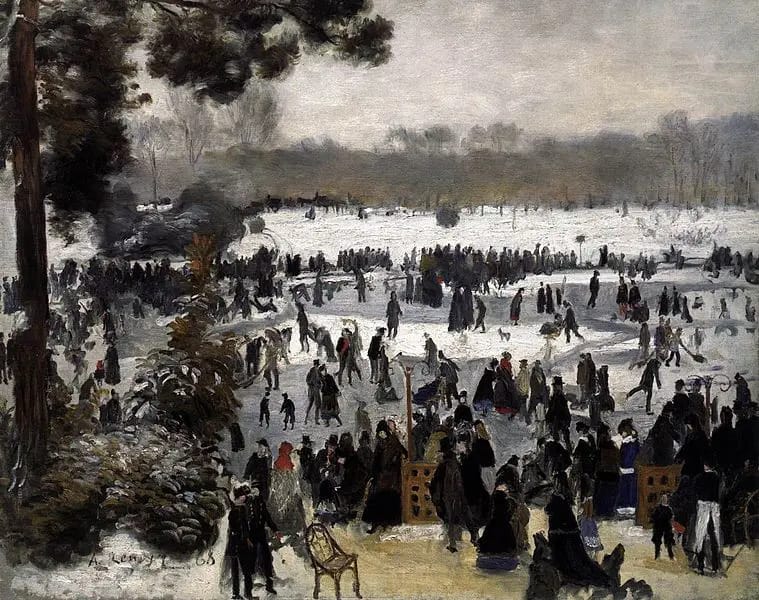
Skaters in the Bois de Boulogne – Pierre-Auguste Renoir (1868)
"Skaters in the Bois de Boulogne" by Pierre-Auguste Renoir captures a fleeting moment of 19th-century Parisian leisure, set against the picturesque backdrop of a winter’s day in the Bois de Boulogne. Renoir’s brushwork brings to life a tranquil scene where skaters glide effortlessly across the frozen pond, their movements mirrored in the icy surface. It provides a window into a simpler time when Parisian society found joy in nature and community. The muted tones of snow and ice contrast with the colorful attire of the skaters, giving the piece a vibrancy that feels intimate yet lively. Renoir invites us to feel the chill in the air and the warmth of shared experiences.
What’s particularly captivating is Renoir’s focus on the human connection within the landscape. He doesn’t paint individual faces in detail but instead captures the essence of people enjoying a rare moment of respite from the bustle of city life. The Bois de Boulogne, a favorite haunt for the Parisians of the time, was more than just a park—it was a stage for life’s everyday dramas and delights. This work reflects Renoir’s growing fascination with light and movement, which would later define his Impressionist masterpieces. It’s a charming slice of life that speaks to the timeless allure of winter, both in its beauty and its ability to bring people together.
Architecture

Panoramic view of the Naqsh-e Rustam. This site contains the tombs of four Achaemenid kings, including those of Darius I and Xerxes. Photo by Diego Delso, Wikimedia. CC BY-SA 4.0.
The architecture of Naqsh-e Rustam, nestled in the rocky cliffs of southern Iran, is a striking testament to the grandeur of the Achaemenid Empire. The site features the imposing tombs of four Achaemenid kings, including Darius I and Xerxes, carved high into the cliffs like monumental facades. Each tomb is cruciform in design, with a central chamber carved deep into the rock, accessed through a grand vertical axis. Above the entrances, elaborate reliefs depict the kings standing before Ahura Mazda, symbolizing divine authority and eternal legacy. The carvings not only reflect the empire's architectural sophistication but also emphasize the kings' celestial connection and their enduring role as stewards of a vast empire. Naqsh-e Rustam is a monumental dialogue between nature and human ingenuity, where the art of rock-cut architecture immortalized Achaemenid power and reverence for their deities.
Travel
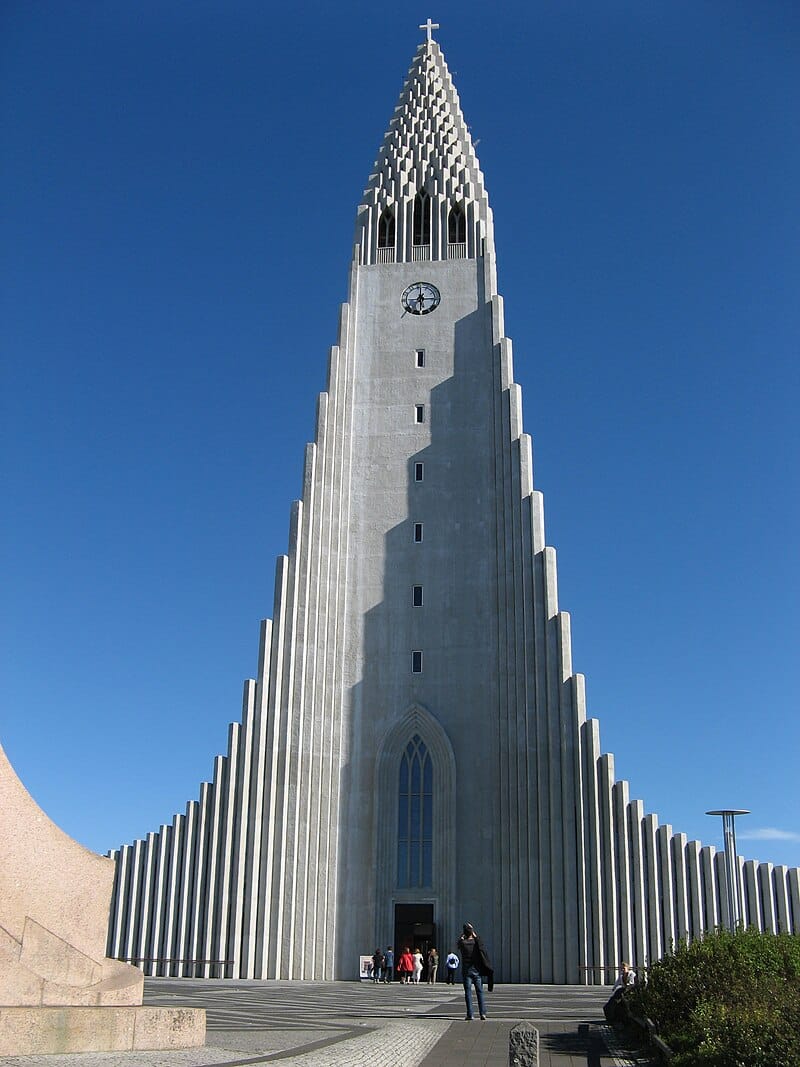
Hallgrímskirkja (Church of Hallgrimur), Reyjavik, Iceland. Photo by Someone35 - Wikimedia, CC BY-SA 3.0.
Reykjavik might be one of the smallest capitals in the world, but it’s packed with charm, history, and natural wonders. Start your journey at Hallgrímskirkja, the iconic church whose striking architecture is inspired by Iceland’s basalt columns. You can’t miss it—it towers over the city like a frozen geyser. Take the elevator to the top, and you’ll be rewarded with sweeping views of Reykjavik’s colorful rooftops, the surrounding mountains, and even the ocean. Afterward, stroll down the nearby Laugavegur, the city’s main street, where cozy cafes and quirky shops beckon you to slow down and soak up the Nordic vibe.
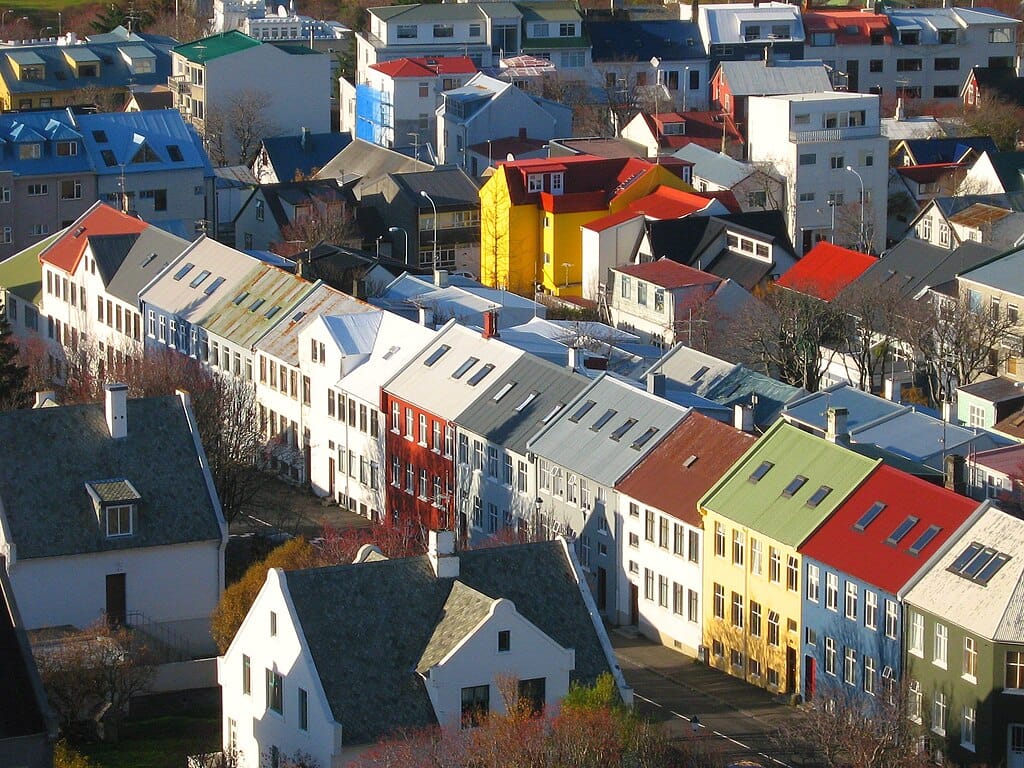
Colourful rooftops line Reykjavík, Iceland. Photo By Bjørn Giesenbauer - Flickr, CC BY-SA 2.0,
Another must-visit is the Harpa Concert Hall, a modern architectural gem that gleams by the harbor. Its glass façade reflects the ever-changing Icelandic sky, making it a photographer’s dream. Even if you’re not catching a concert, the building itself is worth exploring. For a taste of Icelandic history, head to the National Museum of Iceland, where you can trace the country’s journey from Viking settlements to modern-day innovation. And if you’re craving some relaxation, take a dip in one of Reykjavik’s geothermal pools—Nauthólsvík Beach is a unique spot where you can warm up in the hot tubs while looking out at the chilly sea. Reykjavik feels like a gateway to another world, blending the cozy charm of a small town with the dramatic backdrop of Icelandic nature.
Food
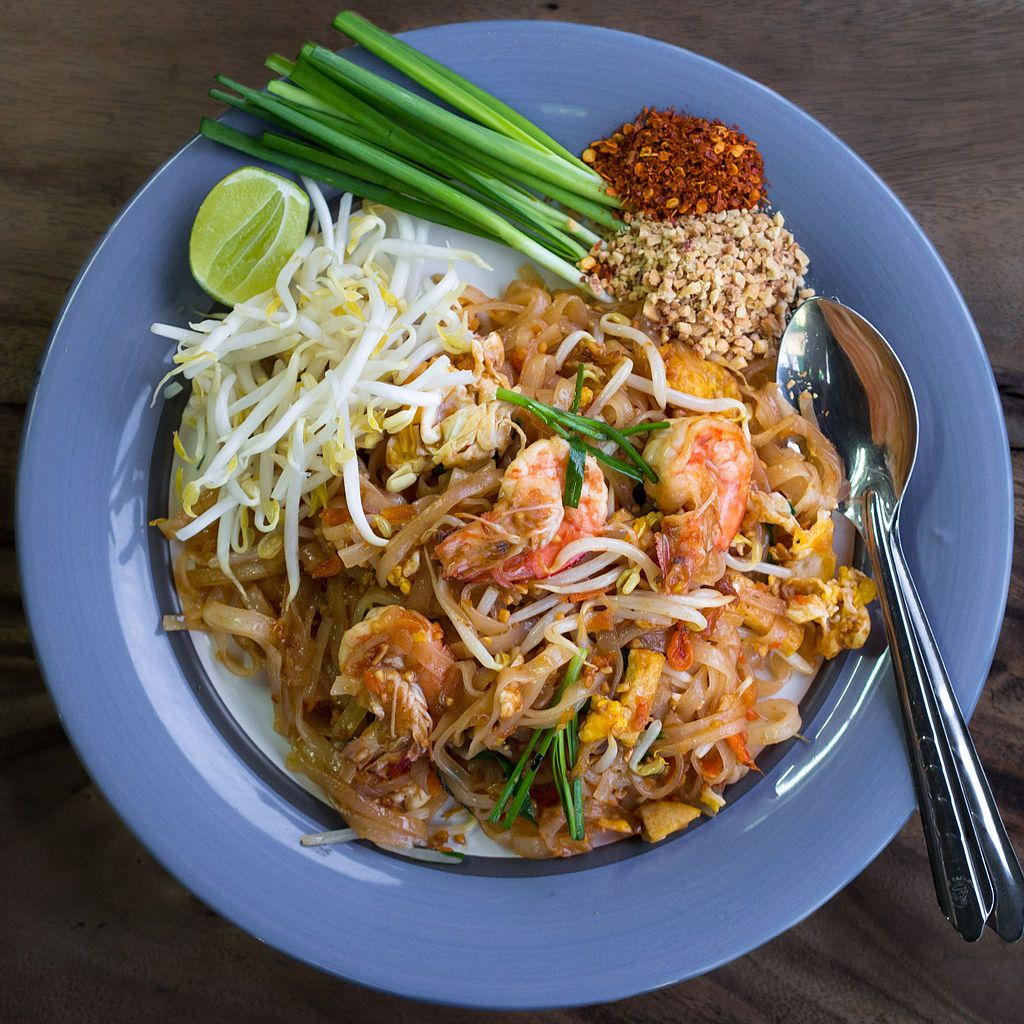
Phat Thai kung sot ("fresh" prawn phat Thai). Photo by Takeaway - Wikimedia, CC BY-SA 3.0.
Phat Thai Kung Sot (Thai Stir-Fried Noodles with Fresh Shrimp)
This recipe brings the vibrant flavors of authentic Thai street food to your kitchen. The dish combines rice noodles, fresh shrimp, and a tangy-sweet sauce, creating the perfect balance of taste and texture.
Ingredients:
200g (7 oz) rice noodles
200g (7 oz) fresh shrimp (peeled and deveined)
2 tbsp vegetable oil
2 cloves garlic (minced)
1 tbsp shallots (finely chopped)
1 egg
100g (3.5 oz) firm tofu (diced, optional)
1 cup bean sprouts
1/4 cup roasted peanuts (coarsely chopped)
2 green onions (sliced)
1 lime (cut into wedges)
Sauce:
3 tbsp tamarind paste
2 tbsp fish sauce
1 1/2 tbsp palm sugar (or brown sugar)
1 tsp chili powder (adjust to taste)
Garnish:
Fresh cilantro
Extra lime wedges
Crushed peanuts
Chili flakes
Instructions:
Prepare the noodles: Soak the rice noodles in warm water for 30 minutes until soft but not mushy. Drain and set aside.
Mix the sauce: In a small bowl, combine tamarind paste, fish sauce, palm sugar, and chili powder. Stir until the sugar dissolves.
Cook the shrimp: Heat 1 tablespoon of vegetable oil in a large wok or skillet over medium-high heat. Add the shrimp and cook for 2-3 minutes until pink and slightly caramelized. Remove and set aside.
Sauté aromatics: Add the remaining oil to the wok. Sauté the garlic and shallots until fragrant, about 1 minute.
Add tofu and egg: If using tofu, add it now and fry until golden. Push everything to one side of the wok and crack the egg on the other side. Scramble it quickly before mixing it with the tofu and aromatics.
Combine noodles and sauce: Add the softened rice noodles to the wok. Pour in the sauce and toss everything together until the noodles are evenly coated and slightly sticky.
Finish the dish: Add the cooked shrimp, bean sprouts, and green onions. Stir-fry for another minute until everything is heated through but the bean sprouts remain crisp.
Serve: Transfer to serving plates and garnish with crushed peanuts, fresh cilantro, and a wedge of lime. Serve immediately with extra chili flakes on the side for those who like more heat.
This dish is a delightful combination of tangy, sweet, and savory flavors with just the right amount of spice. It’s best enjoyed fresh, straight from the wok!




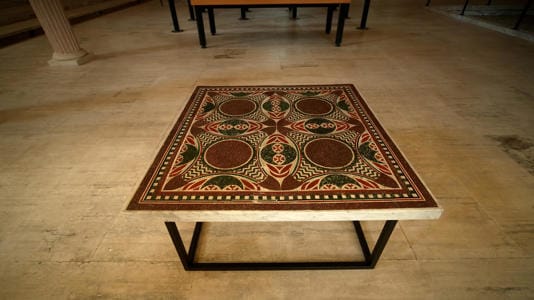
Reply